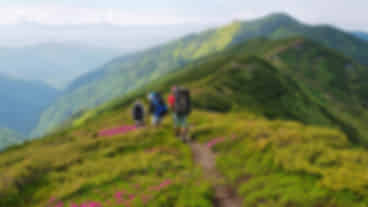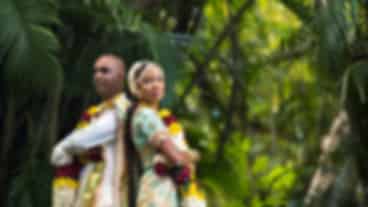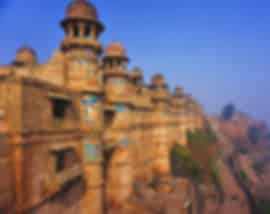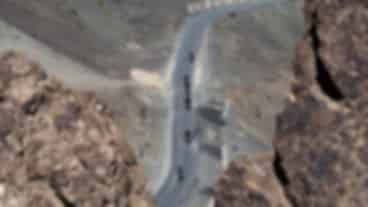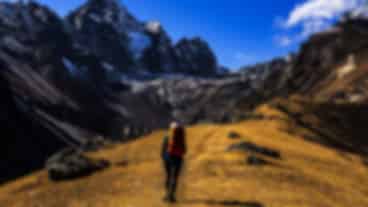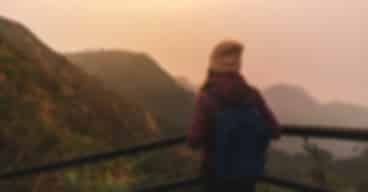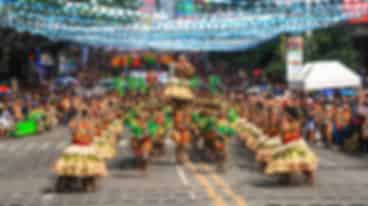Lamahatta – The Eco-Tourism Place
Author
Nigilesh
Updated Date
March 3, 2025
Read
7 minutes
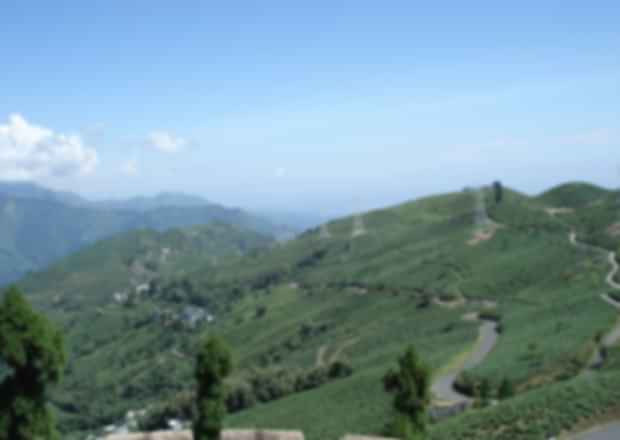
Lamahatta was established as an eco-tourism site at the end of 2012. Finally, with the help of the local government, the villagers and nature conservation teams worked together to create a lovely tourist spot. Lama in Lamahatta means for Buddhist monk and Hatta for hut-a monk’s hermitage. Let’s dig deeper into the details of Lamahatta The Eco-Tourism Place.
Lamahatta is situated at a height of about 5,700 feet and at a drive of 23 km from the hill town of Darjeeling (take a little over an hour by car). The main residents here are tribes such as Sherpas, Yalmos, Tamangs, Bhutias and Dukpas. They’ve all come together to team up with government staff to build an eco-tourism place with state funding of Rs. 1.5 crores.
How to reach Lamahatta
The journey from Siliguri to Lamahatta is around 72 km and will take about 3.5 hours. You’ll need to get to Jorebungalow near Ghoom and then take the Lamahatta path. The best way is to take a taxi from the NJP station. Otherwise, take a shared jeep up to Jorebungalow and then the next one up to Lamahatta. The distance from Darjeeling to Lamahatta is 23kms. The easiest thing is to take a cab, which will take somewhat almost an hour to get there. If you’re coming from Kalimpong, the trip is 41kms (about 2 hours)
Eco-Tourism – Lamahatta
And what does eco-tourism make for Lamahatta? This ensures that the ecological system as well as the bio-diversity of the ecosystem to remain untouched and that the occupants of this place must work closely with the growth of tourism here and operate these operations in order to make them successful and effective in the long run. As a result, many homes have come up here, all held by local residents. And this makes a very clear reason for the name ”The Eco-Tourism Place'” for Lamahatta.

Eco-Tourism - Lamahatta
There are 15 rooms with a total of 34 sleeps and all bedrooms have basic facilities, including toilets, standard furniture, chairs, etc. Each camp can accommodate up to two people. A vast stretch of the perfectly manicured garden was built on the other side of the road, along the hillside and under the thick Dhupi and pine trees. It is the ‘Roadside Garden,’ also known as the Lamahatta Eco Park.
Also read: Namchi Tourism – A Complete Guide To Visiting The South Sikkim District
Places to visit in Lamahatta
- Deolo Hill
- Dr Graham’s Homes
- Teesta River Rafting – Melli
- Peshok Waterfalls
- Kalimpong Science Centre
1. Deolo Hill

Deolo Hill
At a distance of 10 km from Kalimpong Bus Station, Deolo Mountain is a hilltop to the north-east of Kalimpong in West Bengal. Situated at an elevation of about 2,000 meters above sea level, Deolo Hill is the tallest mountain in the city and among the popular Kalimpong Tourist Places. Deolo Hill is among the two hills here between the town of Kalimpong, while Durpin Hill is the second. Out of the three sources of water in Kalimpong, two of which are the main source of drinking water, are situated on the top of this hill.
From the peak of this hill, visitors can enjoy a spectacular panoramic view of villages of the valley of Relli and the river Teesta including the town of Kalimpong. The snow-capped peaks of West Sikkim are also visible from this hill on a clear day. The hill also provides a number of outdoor sports such as paragliding, horseback riding and trekking.
You can also explore a Buddha statue resting on a large stone, a modest Shiva temple and a large Hanuman temple with a large statue of the nearby deity of monkeys.
Also Read: Honeymoon destinations in North East India to visit
2. Dr Graham’s Homes
Dr Graham’s Homes is a 500-acre co-educational residential school and day school associated with the Indian School Certificate Examination Council (CISCE), New Delhi. The home is also a member of the council of Anglo-Indian educational institutions. It is a globally recognized institution and is sponsored by various non-governmental organizations from all over the world. Originally allowed to Anglo Indian students, the school now caters to more than 1,400 students from kindergarten to class Xl in all social groups.
3. Teesta River Rafting – Melli

Teesta River Rafting
Located approximately 18 km from Kalimpong Bus Station. Teesta River Rafting is perhaps the most famous adventure sports event in Kalimpong, West Bengal. This river with its lush greenery is the best rafting option in Kalimpong. The rafting of the Teesta River sculpted deep canyons and gorges in Sikkim wandered through the hills with Kalimpong lying just off the river. This makes the rafting experience quite interesting and enjoyable.
The non-swimmers routes are gentle and fast, without requiring a lot of rapids. The paths are however more challenging for the swimmers and seasoned clients, with high-grade rapids offering quite a thrill. Non-swimmer rafting journeys in Teesta River mainly start at Melli Bridge and end at Geil Khola in Kalimpong. This is a span of 12 km which takes 1-2 hours to complete.
Also Read: Best places to visit in East Sikkim – Paradise of Sikkim
4. Peshok Waterfalls

Peshok Waterfalls
An incredibly beautiful waterfall on the boundary between Peshok and Lopchu (another Tea Estate). The path from home-stay to the cascade is for 1 and 1⁄2 hr(one-way). The travels through thick woods with virtually no roads at times. Not recommended for an elderly person, and when someone is uneasy walking through rough terrain.
5. Kalimpong Science Centre
In the year 2008, the Science Center was built in Kalimpong. The National Council of Science Museums (Ministry of Culture, Government of India), designed and developed this. It occupies an area of 7 acres, and is a high-quality and committed knowledge-based company. The centre’s key aim is to establish a scientific idea in society.
The Kalimpong Science Center includes a science research station, a 3D movie theatre and other display scientific objects. Children get enough knowledge about the various facets of research. Also displayed here is life and works of the different researcher. There is a garden with various outdoor recreation, such as swings, climbing ropes, see-saws and dinosaur models. This brings great joy to every visitor that comes to Lamahatta – The Eco tourism place.
Want us to plan your next Darjeeling vacation? We at pickyourtrail, insist travellers customize their plans according to their needs and help them customise as well. Check out our guides page to get more info on the destination or leave a Whatsapp inquiry for more options
Indian Tourism Useful Resources
Andhra Pradesh Tourism | Uttarakhand Tourism | Sikkim Tourism | Andaman Nicobar Tourism | Rajasthan Tourism | Goa Tourism | Lakshadweep Tourism | Telangana Tourism | Meghalaya Tourism | Kashmir Tourism
Places to Visit Useful Resources
Places to Visit in Uttarakhand | Places to Visit in Goa | Places to Visit in Kashmir | Places to Visit in Rajasthan| Places to Visit in Sikkim | Places to Visit in Andaman Nicobar | Places to Visit in Meghalaya | Places to Visit in Andhra Pradesh | Places to Visit in Lakshadweep | Places to Visit in Telangana
Things to do Useful Resources
Things to do in Goa | Things to do in Andaman Nicobar | Things to do in Kashmir | Things to do in Lakshadweep | Things to do in Sikkim | Things to do in Meghalaya | Things to do in Rajasthan | Things to do in Uttarakhand | Things to do in Andhra Pradesh | Things to do in Telangana
Best Time to Visit Useful Resources
Best Time to Visit Kashmir | Best Time to Visit Andaman Nicobar | Best Time to Visit Goa | Best Time to Visit Sikkim | Best Time to Visit Rajasthan | Best Time to Visit Lakshadweep | Best Time to Visit Meghalaya | Best Time to Visit Uttarakhand | Best Time to Visit Andhra Pradesh | Best Time to Visit Telangana
Recommended articles for you
Discover Packages


Need help in planning?
Talk to our Travel Experts



